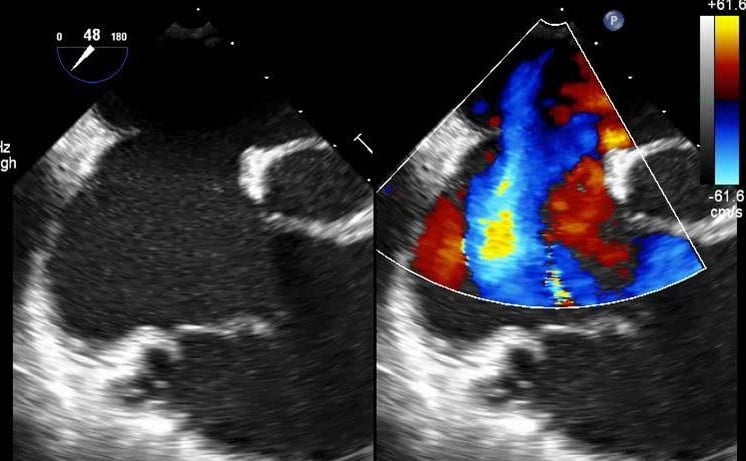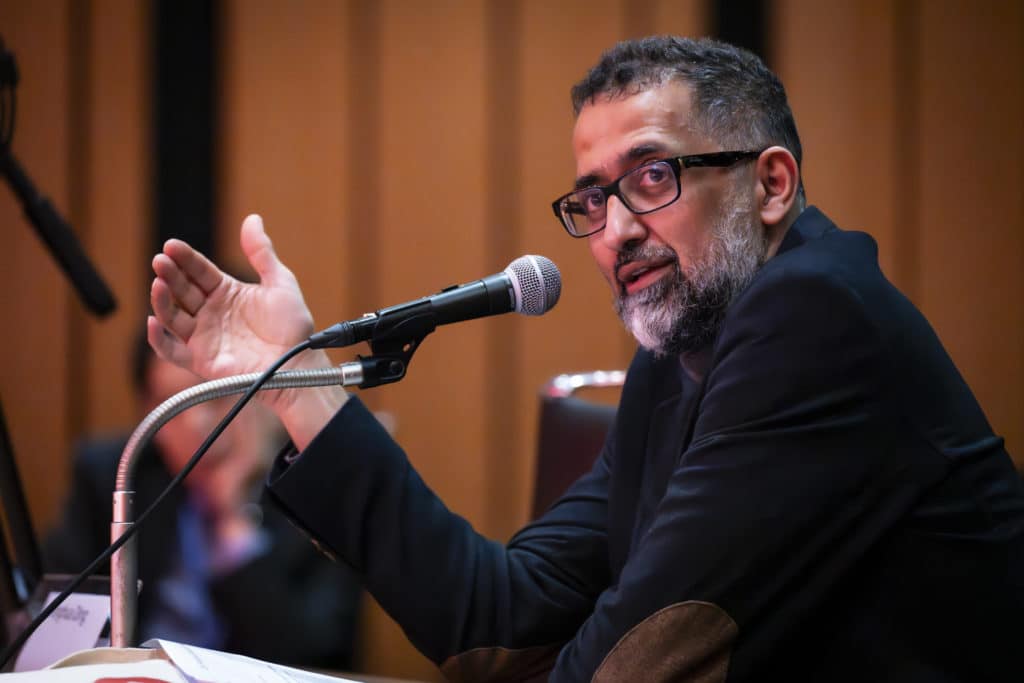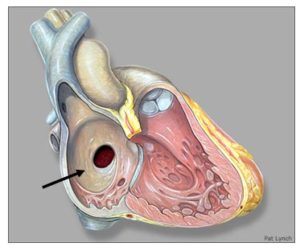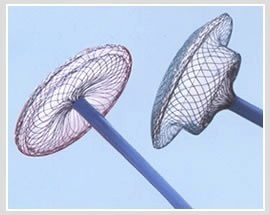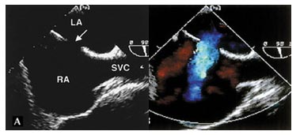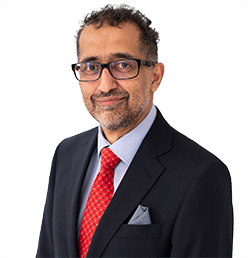Why Choose Dr. Iqbal Malik at London Cardiovascular Clinic?
When making a health decision, choosing the right healthcare provider is important. We offer exceptional care and expertise for Atrial Septal Defect (ASD) closure procedures at London Cardiovascular Clinic, a leading private healthcare provider in the UK.
Here’s what makes London Cardiovascular Clinic the preferred choice for a private ASD closure in the UK:
- Recognised Expertise: Our team of highly skilled cardiologists, cardiac surgeons, and nurses specialises in ASD closure procedures. Led by Dr. Iqbal Malik, a leading Consultant Cardiologist, our experts bring extensive experience and a patient-centred approach to ensure the best possible outcomes. Dr Malik is an internationally recognised expert in the procedure and has lectured on the topic from London to Tokyo, and many placed in!
- Personalised Care: We understand that every patient is unique. Our dedicated team provides tailored care, addressing your specific needs and concerns. From the initial consultation to post-operative care, we’ll be with you every step of the way.
- Comfortable and Convenient Experience: Your well-being is our top priority. Our clinic provides a relaxed and welcoming environment, making your stay as pleasant as possible. We also offer flexible appointment scheduling to accommodate your needs, making the experience less stressful.
Do I Need an ASD Closure Procedure?
An atrial septal defect (ASD) is a hole in the heart that exists between the two upper chambers of your heart (atria). Normally, a wall (the atrial septum) separates them. However, if you have an ASD, there’s an opening in that wall, which allows blood to flow between the two atria.
This common congenital heart defect can often be small and symptom-free. It’s typically detected during a routine checkup or other unrelated medical tests.
When symptoms do occur, they may include:
- Shortness of breath (particularly during exercise)
- Heart palpitations or a fluttering sensation in the chest
- Fatigue
- Swelling (in the legs, ankles, or feet)
- Stroke
- A heart murmur (an unusual whooshing sound heard through a stethoscope)
However, larger or later-diagnosed ASDs can lead to complications in adulthood. They might even shorten your life expectancy if left untreated. Therefore, if you have been diagnosed with ASD, it’s essential to consult with a cardiologist to determine the best course of action for your specific situation.
Below is a diagram illustrating an atrial septal defect (ASD), commonly referred to as a hole in the heart:
What is ASD Closure Procedure?
The ASD can be closed with open heart surgery. The defect is closed by sewing a patch in place (if the defect is large) or by stitches (if the defect is small).
Another option is Percutaneous Atrial Septal Defect (ASD) Closure.
It is a minimally invasive procedure to repair a hole in the heart. During an ASD closure, doctors make a small incision in the groin area and use a catheter—a thin, flexible tube—to insert a device into the heart. The device, made of a special biocompatible material, has two small discs that are deployed on either side of the atrial septum. This device then closes the hole.
The good news is that this procedure doesn’t require open-heart surgery, which makes the recovery time significantly shorter and less painful.
Below you can see the device used to close an atrial septal defect (ASD), effectively sealing the hole in the heart:
What Does ASD Procedure Involve?
Knowing what happens during a procedure, even a minimally invasive one, can help you feel more at ease. The typical steps of a percutaneous ASD closure are:
- General Anaesthetic and Incision: You’ll be given a general anaesthetic, and Dr Malik will make a small incision in the femoral vein in your groin.
- Catheter Insertion: The cardiologist will insert the catheter through the blood vessel into the right atrium of the heart, where the ASD is located. A pipe is passed from a needle puncture in the leg to the heart, and a wire is passed across the hole in the heart. They’ll use imaging techniques to guide the operation, such as ultrasound pictures from a probe in your throat and outside X-ray images. Dr Malik usually uses a balloon to assess the size of the ASD hole.
- Device Positioning: Once the ASD is reached, the closure device, folded inside the catheter, is carefully passed through the catheter into the heart and positioned to close the hole. The cardiologist will check the device’s positioning and stability. It is a double umbrella device that plugs the hole.
- Completion: Finally, the catheter is gently removed, and the incision site is closed.
The strategy used to close the ASD heart surgery will depend on several parameters, such as size, position, and any other congenital heart defects.
Take a look at the 3D TOE images of an ASD closure device in place:
How to Prepare for ASD Closure at London Cardiovascular Clinic?
Getting Here
Dr Malik primarily sees patients at One Welbeck Heart Health, 1 Welbeck St, London W1G 0AR. He can also accommodate appointments at other locations upon request.
What Tests Will I Need Beforehand?
Before the procedure, you might undergo several tests, including:
- Transoesophageal Echocardiography (TOE): A detailed ultrasound imaging technique that uses a probe passed into your oesophagus to get a closer look at the heart’s structure.
- Cardiac MRI Scan: This provides comprehensive images of the heart and can assess the size and impact of the ASD.
- Coronary Angiography (CT): This test is to look for related coronary artery disease and measure heart pressure, which may be needed.
- Exercise Treadmill Test (ETT): This test may be recommended to evaluate your true exercise tolerance and how your heart functions under physical stress.
Note: It is helpful to bring a letter from your General Practitioner, prescription sheets, old letters, and any previous CDs of investigations (e.g., angiograms).
Treatment
After reviewing the results of these tests, Dr. Malik will discuss with you individual instructions on how to prepare for your ASD heart surgery. These might include dietary and/or medicinal adjustments.
Don’t hesitate to discuss any concerns or questions with the medical staff dedicated to supporting you throughout your healthcare journey.
Below you can see a TOE image of ASD (“hole in the hear”):
Book your consultation
Send us an e-mail or complete our simple contact form to arrange your consultation with London’s top cardiologist consultant, Dr. Iqbal Malik.
ASD Closure Recovery: What to Expect
After your ASD closure procedure, you’ll be glad to know that the recovery process is generally quite smooth. You will stay overnight in the hospital. You will then recover at home, able to exercise but NOT lift >10kg until 4 weeks, thus limiting only strenous physical activities.
Of course, every individual is different, and your doctor will provide you with personalised advice on rest and recovery time. You’ll receive detailed instructions on:
- Medications: You’ll likely be prescribed blood thinners to prevent blood clots from forming.
- Wound Care: Instructions on how to care for the incision site to prevent infection, keeping it dry and clean.
- Physical Activity Restrictions: Guidance on when to resume normal activities and any activities you should avoid.
To ensure optimal healing, it’s important to carefully follow these guidelines.
Generally, you can expect a follow-up appointment with your cardiologist within a few weeks of your procedure. During this appointment, Dr. Malik will check your progress, answer any questions you may have, and discuss any necessary lifestyle modifications.
Frequently Asked Questions
Are There Any Risks of ASD Closure?
As with any medical procedure, ASD closure, whether percutaneous or surgical, carries potential risks and complications. However, it’s important to understand that these risks are relatively low – about 1-2% of cases.
Potential risks associated with ASD closure:
- Arrhythmia (irregular heartbeat): The heart’s electrical system can be temporarily affected during the procedure, leading to an irregular heartbeat. This usually lasts a few weeks and settles with medication.
- Bleeding: Any procedure that involves a vein puncture carries a risk of bleeding. However, this is usually minimal with ASD heart surgery.
- Device migration: In rare cases, the closure device might move from its intended position. This might require another procedure to recapture or remove it.
- Stroke: Although rare, there’s a slight risk of stroke due to blood clots forming during the procedure. Your medical team takes measures to minimise this risk.
- Internal bleeding: The blood is thinned during the procedure as there are wires and pipes in the heart and blood vessels. During the procedure with big devices, some patients can develop internal bleeding due to erosion.
To put your mind at ease, watch a video of Dr. Malik performing a TAVI surgery—he has been doing them for a long time! :
What Are the Benefits of ASD Closure?
By opting for an ASD closure, patients often experience significant improvements in symptoms such as shortness of breath and fatigue. Additionally, this minimally invasive procedure reduces the risk of long-term complications like arrhythmias, heart failure, and stroke. Overall, ASD closure can greatly enhance the quality of life and provide peace of mind knowing that the risk of serious heart-related issues has been effectively minimised.
Unlike, open heart surgery, the procedure involves closing the hole without needing to cut your chest. Overall, it has about a >95% chance of successful closure (depending on the hole size).
How Much Does ASD Closure Surgery Cost UK?
Insurance
Most private medical insurance policies cover private ASD closure surgery. To speed things up, please contact your insurance company before your appointment to obtain your pre-authorisation code. This will help you understand the specifics of what your policy covers and any potential out-of-pocket expenses related to the “hole in heart” surgery cost in the UK.
Self-funding
If you are self-funding your procedure, our price list is available upon request. For any estimation of costs, including the price of private ASD heart surgery in the UK, please contact our office. We can provide detailed information and answer any questions you may have about your “hole in the heart” surgery cost.
What’s the Difference Between Transcatheter (Percutaneous) ASD Closure and Surgical ASD Closure?
The main difference is the access point: Percutaneous ASD closure is done via a small incision in the groin to get into your vein (without the need to have a cut on the chest), while surgical ASD closure is done via a cut on the chest and the use of a heart-lung bypass machine. Percutaneous ASD closures are less invasive than open-heart surgery and have similar outcomes and success rates. The goal of both procedures is to improve blood flow and reduce the risk of complications such as stroke or heart failure.
What’s the Difference Between ASD and PFO?
Many people confuse Atrial Septal Defects (ASDs) with Patent Foramen Ovales (PFOs) because they both involve an opening between the heart’s upper chambers, the atria. However, they differ significantly in their formation and potential complications.
An ASD is a true hole in the septum, the wall separating the atria. This defect arises during fetal development when the heart is forming. On the other hand, a PFO is a flap-like opening that didn’t properly close after birth.
While both conditions can allow blood to shunt between the atria, ASDs typically cause more significant shunting due to the larger opening. This can lead to a higher risk of complications, such as heart rhythm problems, stroke, or heart failure.

